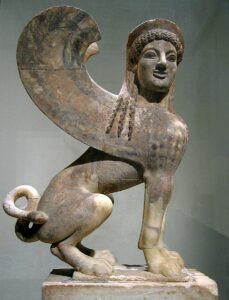
CC 3.0
Activity 1
In preparation for our reading of the ancient Greek tragedy Oedipus the King, please review the attached PowerPoint presentation Greek Tragedies,
Activity 2
Please watch this fascinating 10-minute video, which illustrates and expands on some of the information in the Activity 1 readings.
Activity 3
This 10-minute video picks up from the History of Theatre Part 1, showing the development of Greek theater with specific reference to the play we will be reading, Oedipus the King.

CC-by-SA-2.0
Activity 4
Begin the reading of Oedipus the King from the Prologue to Page 10 (right hand column) at the point of [Enter JOCASTA]. Pay special attention to the developing characters of the protagonist, King Oedipus, Creon, and Teiresias.
(OER source: https://www.oercommons.org/authoring/9802-oedipus-the-kingLicense: CC Attribution 4.0 International).
Activity 5
Click the link below for my video lecture Aristotle Defines Tragedy. If for any reason the link is not working for you, you can download the attached mp4 file of the video. This is relevant to the week’s discussion.
Aristotle Defines Tragedy Video
“Tragedy is an imitation of an action of high importance, complete and of some amplitude; in language enhanced by distinct and varying beauties; acted not narrated; by means of pity and fear effecting its purgation of these emotions.”

Public Doman
Activity 6
Click this link to access the Week 6 Discussion board about poetry. Due to a “bug” on the OpenLab site, this discussion was not viewable last week.
Click here for information about How Discussion Boards Work.
